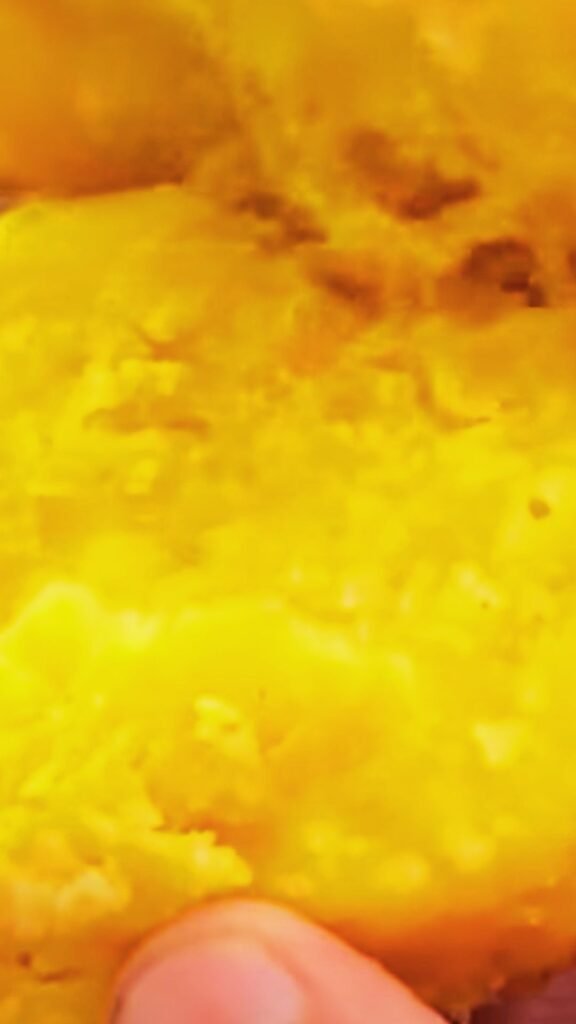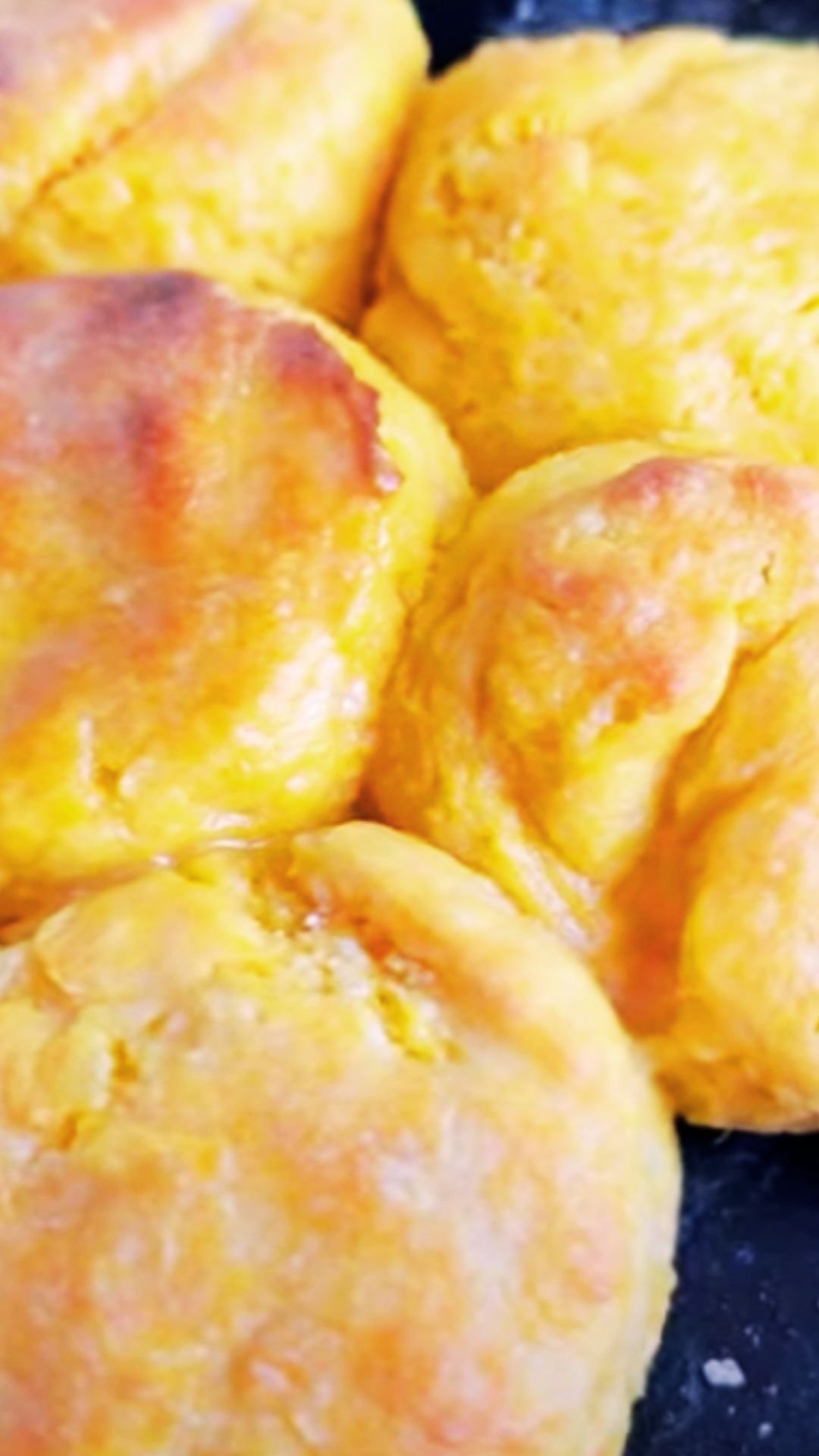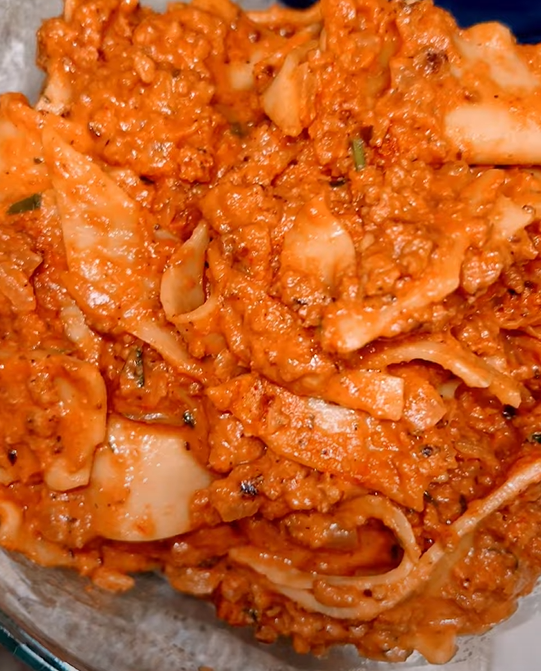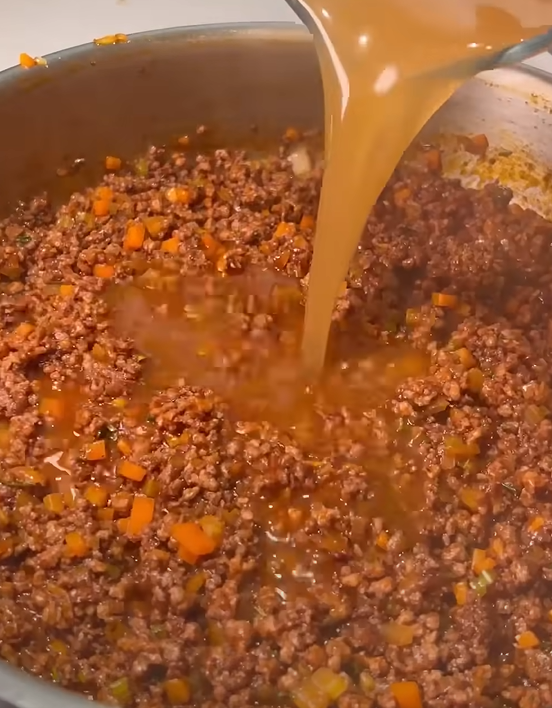I’ve been making biscuits for over fifteen years, and I can confidently say that mashed potato biscuits are among the most underrated gems in the world of homemade bread. These aren’t your ordinary biscuits – they’re tender, incredibly moist, and have a unique flavor that comes from incorporating leftover mashed potatoes into the dough. If you’ve ever wondered what to do with those extra mashed potatoes sitting in your refrigerator, this recipe will become your new favorite solution.
The beauty of mashed potato biscuits lies in their versatility and forgiving nature. Unlike traditional biscuits that can become tough if overworked, the starch from the potatoes creates a more tender crumb that’s almost foolproof. I discovered this recipe during a particularly busy holiday season when I had mountains of leftover mashed potatoes and needed something quick yet impressive for breakfast.
What Makes Mashed Potato Biscuits Special
Mashed potato biscuits represent the perfect marriage of two beloved comfort foods. The potatoes serve multiple purposes in this recipe: they add moisture, create an incredibly tender texture, and contribute a subtle earthy flavor that complements the buttery richness of traditional biscuit dough.
Key Benefits:
- Enhanced Moisture: Potatoes naturally contain moisture that keeps biscuits soft for days
- Improved Texture: The starch creates a more tender, less crumbly biscuit
- Extended Freshness: These biscuits stay fresh longer than traditional versions
- Flavor Depth: Subtle potato flavor adds complexity without overwhelming
- Waste Reduction: Perfect way to use leftover mashed potatoes
The science behind these biscuits is fascinating. When you incorporate mashed potatoes into biscuit dough, the potato starch interferes with gluten development, resulting in a more tender final product. This means you can handle the dough more without worrying about tough biscuits – a common concern for novice bakers.
Essential Ingredients Breakdown
Understanding your ingredients is crucial for baking success. Here’s what you’ll need and why each component matters:
| Ingredient | Amount | Purpose | Substitution Options |
|---|---|---|---|
| All-purpose flour | 2 cups | Structure and body | Can substitute up to ½ cup with whole wheat |
| Mashed potatoes (cold) | 1 cup | Moisture and tenderness | Must be smooth, no lumps |
| Baking powder | 1 tablespoon | Leavening agent | Fresh is crucial – test first |
| Salt | 1 teaspoon | Flavor enhancement | Sea salt or kosher salt work |
| Cold butter | 6 tablespoons | Flakiness and flavor | European-style preferred |
| Buttermilk | ¾ cup | Acidity and moisture | Can make with milk + vinegar |
| Large egg | 1 | Binding and richness | Room temperature works best |
The quality of your mashed potatoes significantly impacts the final result. I always recommend using potatoes that were mashed with butter and a touch of cream or milk. Avoid using mashed potatoes with excessive seasonings like garlic or herbs, as these can overpower the delicate biscuit flavor.
Step-by-Step Preparation Method
My technique for mashed potato biscuits has been refined through countless batches. The key is treating the cold mashed potatoes almost like additional fat in the recipe.
Preparation Phase
- Preheat your oven to 425°F (220°C). This high temperature is essential for creating steam quickly, which results in taller, fluffier biscuits.
- Prepare your workspace by lightly flouring a clean surface and gathering all ingredients. Cold ingredients are crucial, so keep butter and buttermilk refrigerated until needed.
- Check your mashed potatoes – they should be completely smooth and cold. If there are lumps, pass them through a fine-mesh sieve or food mill.
Mixing the Dough
- Combine dry ingredients in a large mixing bowl: flour, baking powder, and salt. Whisk thoroughly to ensure even distribution.
- Cut in the cold butter using a pastry cutter or two knives until the mixture resembles coarse crumbs with some pea-sized pieces. These butter pieces create flaky layers.
- Add cold mashed potatoes and gently work them into the flour mixture using your fingertips. Don’t overmix – you want some small potato pieces visible.
- Create a well in the center of the mixture. In a separate bowl, whisk together buttermilk and egg until smooth.
- Pour the liquid into the well and use a fork to gently stir until the dough just comes together. It should look shaggy and slightly sticky.
Shaping and Cutting
- Turn the dough onto your floured surface and gently pat it into a rectangle about ¾ inch thick. Avoid rolling with a rolling pin if possible.
- Fold the dough in half, then pat it down again. This creates layers that result in taller biscuits.
- Cut straight down with a sharp, floured biscuit cutter or glass. Don’t twist the cutter – this seals the edges and prevents proper rising.
- Place biscuits on an ungreased baking sheet with sides barely touching. This helps them rise taller by supporting each other.
Baking Process
- Brush tops lightly with melted butter for golden color and extra flavor.
- Bake for 15-18 minutes until tops are golden brown and biscuits have doubled in height.
- Cool slightly before serving, but these are best enjoyed warm from the oven.
Advanced Techniques and Pro Tips
After years of perfecting this recipe, I’ve learned several techniques that consistently produce superior results:
Temperature Control: Keep everything cold except your oven. I sometimes put my mixing bowl in the freezer for 10 minutes before starting. Cold ingredients create steam when they hit the hot oven, resulting in flakier biscuits.
Handling Technique: The less you handle the dough, the more tender your biscuits will be. I use a bench scraper to help move and shape the dough without overworking it.
Cutting Method: Sharp, straight cuts are essential. Dull cutters or twisting motions seal the edges, preventing proper rise. I dip my cutter in flour between each cut.
Placement Strategy: Placing biscuits so they barely touch on the baking sheet creates mutual support that encourages upward growth rather than spreading.
Nutritional Information and Variations
| Nutrient | Per Biscuit (Makes 12) | Daily Value % |
|---|---|---|
| Calories | 185 | 9% |
| Total Fat | 7g | 11% |
| Saturated Fat | 4g | 20% |
| Cholesterol | 35mg | 12% |
| Sodium | 285mg | 12% |
| Carbohydrates | 27g | 9% |
| Dietary Fiber | 1g | 4% |
| Protein | 5g | 10% |
| Potassium | 145mg | 4% |
Flavor Variations I Love
Herb-Infused: Add 2 tablespoons of fresh chopped herbs like rosemary, thyme, or chives to the dry ingredients.
Cheese Lovers: Incorporate ½ cup of sharp cheddar cheese, grated finely, for rich, savory biscuits.
Sweet Potato Version: Substitute sweet potato for regular mashed potato and add a pinch of cinnamon.
Garlic Parmesan: Mix in 2 cloves of minced garlic and ¼ cup grated Parmesan cheese.
Troubleshooting Common Issues
Through my years of teaching this recipe, I’ve encountered every possible problem. Here are solutions to the most common issues:
Dense, Heavy Biscuits: Usually caused by overmixing or using warm ingredients. Keep everything cold and mix just until combined.
Flat Biscuits: Check your baking powder freshness – it should foam when mixed with hot water. Also ensure you’re cutting straight down without twisting.
Dry Biscuits: This often happens when there’s too much flour or not enough moisture. Mashed potatoes should be creamy, not dry.
Uneven Rising: Make sure your oven is fully preheated and avoid opening the door during the first 12 minutes of baking.
Storage and Reheating Guidelines
Proper storage ensures you can enjoy these biscuits for days after baking:
Short-term Storage: Store cooled biscuits in an airtight container at room temperature for up to 3 days. The potato content helps maintain moisture longer than traditional biscuits.
Freezing Instructions: Wrap individual biscuits in plastic wrap, then place in freezer bags. They’ll keep for up to 3 months. I often freeze unbaked cut biscuits on a tray, then transfer to bags once solid.
Reheating Methods:
- Oven: 350°F for 5-7 minutes wrapped in foil
- Microwave: 15-20 seconds (though this softens the crust)
- Toaster: Split and toast for crispy edges with soft centers
Serving Suggestions and Pairings
These versatile biscuits shine in numerous applications:
Breakfast Classics: Split and top with butter, honey, or your favorite jam. I particularly love them with apple butter or homemade strawberry preserves.
Savory Applications: Use as a base for breakfast sandwiches with scrambled eggs and cheese, or create mini sliders with ham and mustard.
Comfort Food Combinations: Serve alongside hearty soups, stews, or chili. They’re exceptional for soaking up gravy or sauce.
Elegant Presentations: For special occasions, I serve them warm with compound butter made from herbs from my garden.
Seasonal Adaptations
I’ve developed several seasonal variations that celebrate different times of year:
Fall Harvest: Add a tablespoon of pumpkin puree and a pinch of sage to the mashed potatoes before incorporating into the dough.
Winter Comfort: Mix in dried cranberries and a touch of orange zest for holiday gatherings.
Spring Fresh: Incorporate finely chopped green onions and fresh dill for a bright, fresh flavor.
Summer Garden: Add corn kernels and jalapeño for a southwestern twist that pairs beautifully with barbecue.

The Science Behind Perfect Biscuits
Understanding the science helps you become a better baker. The success of these biscuits relies on several chemical reactions:
Steam Creation: Cold butter and liquids create steam when they hit the hot oven, causing the biscuits to rise and create flaky layers.
Starch Gelatinization: The potato starch swells and creates a tender crumb structure that’s more forgiving than pure wheat flour.
Protein Development: Limited mixing prevents excessive gluten formation, maintaining tenderness while providing enough structure.
Maillard Reaction: The browning on top results from proteins and sugars reacting at high heat, creating complex flavors and appealing color.
Recipe Scaling and Batch Cooking
This recipe scales beautifully for different occasions:
| Serving Size | Flour | Mashed Potatoes | Butter | Buttermilk | Baking Time |
|---|---|---|---|---|---|
| Small batch (6) | 1 cup | ½ cup | 3 tbsp | 6 tbsp | 12-15 min |
| Standard (12) | 2 cups | 1 cup | 6 tbsp | ¾ cup | 15-18 min |
| Large batch (24) | 4 cups | 2 cups | ¾ cup | 1½ cups | 18-22 min |
| Party size (36) | 6 cups | 3 cups | 1⅛ cups | 2¼ cups | 20-25 min |
For large batches, I recommend working in smaller portions to maintain dough temperature and prevent overworking.
Questions and Answers
Q: Can I use instant mashed potatoes instead of homemade? While fresh mashed potatoes produce the best results, you can use instant in a pinch. Prepare them according to package directions but make them slightly thicker than normal, and let them cool completely before using.
Q: Why do my biscuits spread instead of rising tall? This usually indicates the dough is too warm or wet. Chill your ingredients and work quickly. Also, ensure you’re cutting straight down without twisting your cutter.
Q: Can I make the dough ahead of time? You can prepare the dough up to 24 hours in advance. Shape the biscuits, place them on a baking sheet, cover tightly, and refrigerate. Bake directly from cold, adding 2-3 extra minutes to the baking time.
Q: What’s the best way to incorporate mix-ins like cheese or herbs? Add dry mix-ins with the flour, and fresh herbs or cheese just before adding the liquid ingredients. Don’t exceed ½ cup of total mix-ins or you’ll affect the dough structure.
Q: How do I know when the biscuits are fully baked? They should be golden brown on top and sound hollow when tapped on the bottom. Internal temperature should reach 190°F if you want to be precise.
Q: Can I use different types of potatoes for the mashed potato base? Russet potatoes work best due to their high starch content and fluffy texture. Waxy potatoes like red or fingerlings can make the biscuits dense.
Q: My buttermilk expired – what can I substitute? Mix 1 tablespoon of white vinegar or lemon juice into ¾ cup of regular milk. Let it sit for 5 minutes until it curdles slightly. This creates the acidity needed for proper rising.
Q: How can I make these biscuits dairy-free? Substitute cold vegan butter and use non-dairy milk with a tablespoon of apple cider vinegar instead of buttermilk. The results won’t be identical but will still be delicious.
Q: What if I don’t have a biscuit cutter? A clean, empty can or glass works perfectly. Flour the rim and cut straight down. You can even use a sharp knife to cut squares, though round biscuits rise more evenly.
Q: Can I freeze unbaked biscuits? Absolutely! Place cut biscuits on a baking sheet and freeze until solid, then transfer to freezer bags. Bake from frozen, adding 3-5 minutes to the baking time.
These mashed potato biscuits have become a staple in my kitchen, and I’m confident they’ll become a favorite in yours too. The combination of tender texture, rich flavor, and foolproof technique makes them perfect for both novice and experienced bakers. Whether you’re using up leftover mashed potatoes or making them specifically for this recipe, you’ll find these biscuits are worth every delicious bite.


